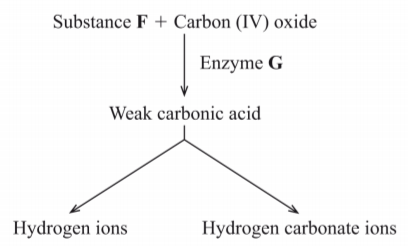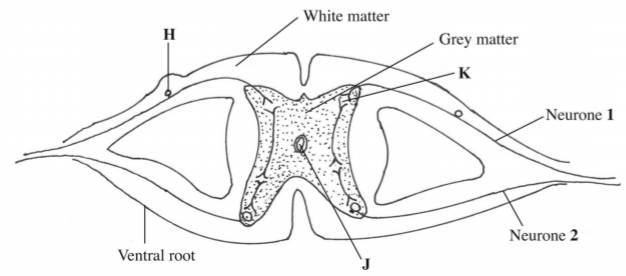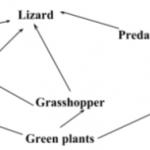KNEC KCSE Biology Paper 2 Question Paper / KCSE 2014
KCSE 2014
Biology Paper 2
SECTION A (40 Marks)
Answer all question in this section in the spaces provided.
(a) State four characteristics of fruits dispersed by animals. (4 marks)
(b) State two roles of each of the following hormones in menstruation:
(i) luteinising hormone; (2 marks)
(ii) oestrogen. (2 marks)
8 marks
The diagram below illustrates the role played by red blood cells in the transportation of carbon (IV) oxide.
(a) Other than the carbon (IV) oxide transportation in the red blood cells, name the other form of carbon (IV) oxide transportation in humans. (1 mark)
(b) (i) Name substance F (1 mark)
(ii) Name the enzyme marked G and state its role in the reaction. (2 marks)
Enzyme
Role
(c) Explain why transportation of carbon (IV) oxide in red blood cells is advantageous. (2 marks)
(d) Explain the role of calcium ions in blood cloning. (2 marks)
8 marks
(a) Describe the mechanism of gaseous exchange in plants through the lenticels. (3 marks)
(b) Explain each of the following:
(i) the tracheoles lack spiral bands of chitin; (3 marks)
(ii) the floor of the mouth is lowered during inhalation in a bony fish. (2 marks)
8 marks
(b) (i) Differentiate between sickle cell anaemia and sickle cell trait. (2 marks)
(ii) Explain why people with sickle cell trait have an adaptive survival advantage over normal individuals in malaria endemic regions. (2 marks)
8 marks
The diagram below represents the transverse section of the spinal cord.
(a) Name the part labelled H. (1 mark)
(b) State two functions of the fluid found in the part labelled J. (2 mark)
(c) Give a reason for the colour of white matter. (1 mark)
(d) Name and give the function of the enzyme found at the part labelled K.
Name (1 mark)
Function (2 mark)
(e) On the diagram, use an arrow to show the direction of impulse transmission along the neurone labelled 1. (1 mark)
8 marks
SECTION B (40 Marks)
Answer question 6 (compulsory) and either question 7 or 8 .
An experiment was done to determine the uptake of nitrogen from the soil by broad bean seedlings. The experiment was done with one set of seedlings M grown in the atmosphere enriched with carbon (IV) oxide and another set up of seedlings N grown in the normal atmosphere.
The amount of nitrogen in each seedling was measured in milligrams at intervals of ten days. The table below shows the results obtained.
(a) Using the same axis draw line graphs of nitrogen uptake by the two (M and N) sets of broad bean seedlings against time. (8 marks)
(b) Determine the rate of uptake of nitrogen in Set M between 65 and 85 days. (2 marks)
(c) (i) What is the relationship between carbon (IV) oxide concentration in the air and nitrogen uptake? ( 1 mark)
(ii) Account for the relationship in (cXi) above. (3 marks)
(d) (i) What would happen to the concentration of nitrogen in the seedlings in set M, if after 75 days the seedlings are transferred to a nonnal atmosphere. (1 mark)
(ii) Explain your answer in (d)(i) above. (2 marks)
(e) State three ways in which nitrogen fixation occurs.
(3 marks)
20 marks
(a) Explain how each of the following factors affects the rate of photosynthesis:
(i) temperature; (2 marks)
(ii) chlorophyll concentration. (2 marks)
(b) Describe the process of carbohydrate digestion in human beings. (16 marks)
20 marks
(a) How does excretion take place in plants? (4 marks)
(b) Describe the role of the human skin in homeostasis. (16 marks)
20 marks









